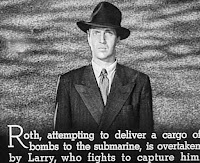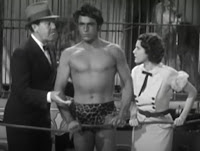We're nine years into the fabled Trojan War, nine years after Paris from Troy abducted Helen from Sparta, and the Geeks have held Troy under siege since then. The Greek hero Achilles (I'll be including place name adjectives just to keep things clear for myself) has killed the Trojan hero Hector and disrespectfully dragged the body in the dirt behind his chariot. Aeneas, who has brought a wounded soldier back to Troy, believes that this war over Helen has dragged on far too long. When he is told that Helen is a symbol of Troy's prestige and glory, he replies "Helen is our gravedigger," which is hard to dispute. King Priam learns that Hector's body is to be left for the vultures, and decides to go to the Greeks to ask for the body. Aeneas plans to join him, but Paris, a bit of a passive jerk, is jealous of the respect that Aeneas has built up in Troy, so he orders Aeneas not to go, but Priam insists. At the Greek camp, Priam is given Hector's body, but in order to get Hector's weapons to give to his widow Andromache, Aeneas has to fight the Greek strongman Ajax. Aeneas wins, a victory which just adds to Paris's jealousy. Paris sends Aeneas off to build up an army, then sends his sister Creusa, pregnant by Aeneas, to Greece as a hostage to be held for a temporary truce. The Greek king Agamemnon also asks for chariots, gold, and a large quantity of wood for building purposes. If you've read Virgil (or have seen Monty Python and the Holy Grail), you know what's coming. Aeneas and his troops battle the Greeks, with Paris shooting an arrow into the Achilles' heel, killing him. The Greeks retreat, leaving behind a giant wooden horse, supposedly built to honor the god Poseidon. Priam's daughter Cassandra, known as a seer, warns that the horse contains the seeds of Troy's destruction, but it is brought into the walled city anyway. As we know, inside the horse is a group of Greek warriors, led by Menelaus (the legit husband of Helen), who, late at night, break out of the horse, set fire to the city, open the gates, and let in the Greek troops who wreak total destruction.
Despite having read some Virgil and Homer in my youth, I've never been clear about the Trojan War, but this adventure film presents its climax in a way that is easy to understand, even as it leaves out any mention of the meddling Greek gods. The budget for this peplum must have been higher than average, with spectacular sets, decent battle scenes, and huge numbers of extras—you often see the phrase "a cast of thousands" used in publicity for these kinds of films, and in this case, I'd believe it. The director, Giorgio Ferroni, made several sword-and-sandal movies (though his real classic is the small scale horror film MILL OF THE STONE WOMEN. He is clearly in his element here. Barry Atkinson, peplum expert, considers this film to be superior to the Brad Pitt TROY from 2004. The horse is impressive and the climactic fall of Troy is particularly well handled. Acting, rarely a strong area in peplum films, is adequate here. It's a little strange to have muscled hero Steve Reeves playing a character who doesn't prevail (Aeneas), though he does escape the destruction at the end and goes off with others to help found Rome. Actually, except for Paris, there really are no traditional peplum heroes and villains—there is good and bad in the actions of both populations. John Drew Barrymore has the relatively small role of Ulysses; Mimmo Palmara makes an impression in his few minutes as Ajax. For the record, Edy Vessel is Helen and Warner Bentivegna is Paris. The print I watched on YouTube is widescreen and in pretty good shape. Pictured are Palmara and Reeves. [YouTube]











